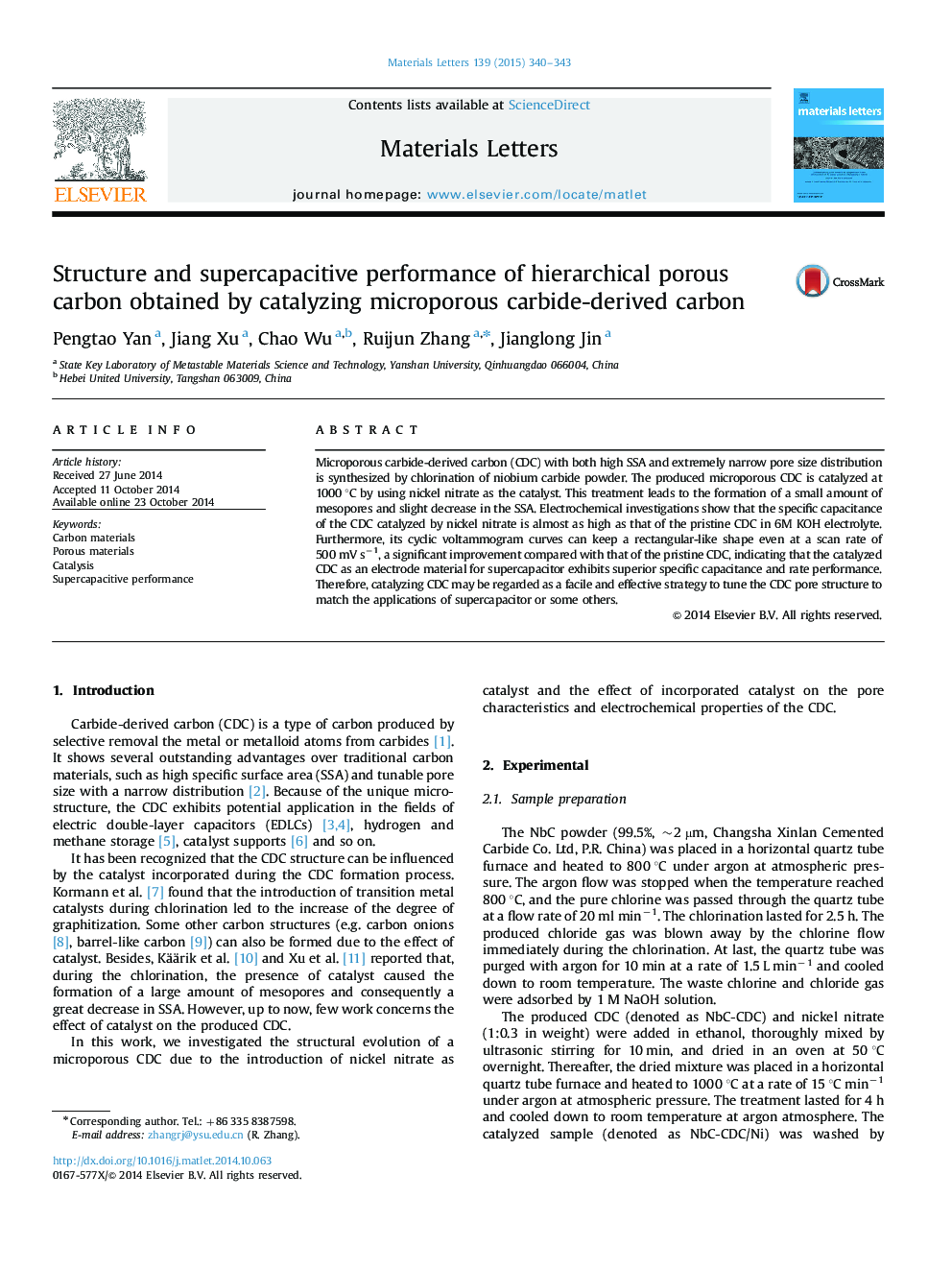| Article ID | Journal | Published Year | Pages | File Type |
|---|---|---|---|---|
| 1643591 | Materials Letters | 2015 | 4 Pages |
•Hierarchical porous carbon can be obtained by catalysis of microporous CDC.•Hierarchical porous carbon exhibits excellent supercapacitive performance.•Catalyzing CDC may be an effective strategy to tune the CDC pore structure.
Microporous carbide-derived carbon (CDC) with both high SSA and extremely narrow pore size distribution is synthesized by chlorination of niobium carbide powder. The produced microporous CDC is catalyzed at 1000 °C by using nickel nitrate as the catalyst. This treatment leads to the formation of a small amount of mesopores and slight decrease in the SSA. Electrochemical investigations show that the specific capacitance of the CDC catalyzed by nickel nitrate is almost as high as that of the pristine CDC in 6M KOH electrolyte. Furthermore, its cyclic voltammogram curves can keep a rectangular-like shape even at a scan rate of 500 mV s−1, a significant improvement compared with that of the pristine CDC, indicating that the catalyzed CDC as an electrode material for supercapacitor exhibits superior specific capacitance and rate performance. Therefore, catalyzing CDC may be regarded as a facile and effective strategy to tune the CDC pore structure to match the applications of supercapacitor or some others.
